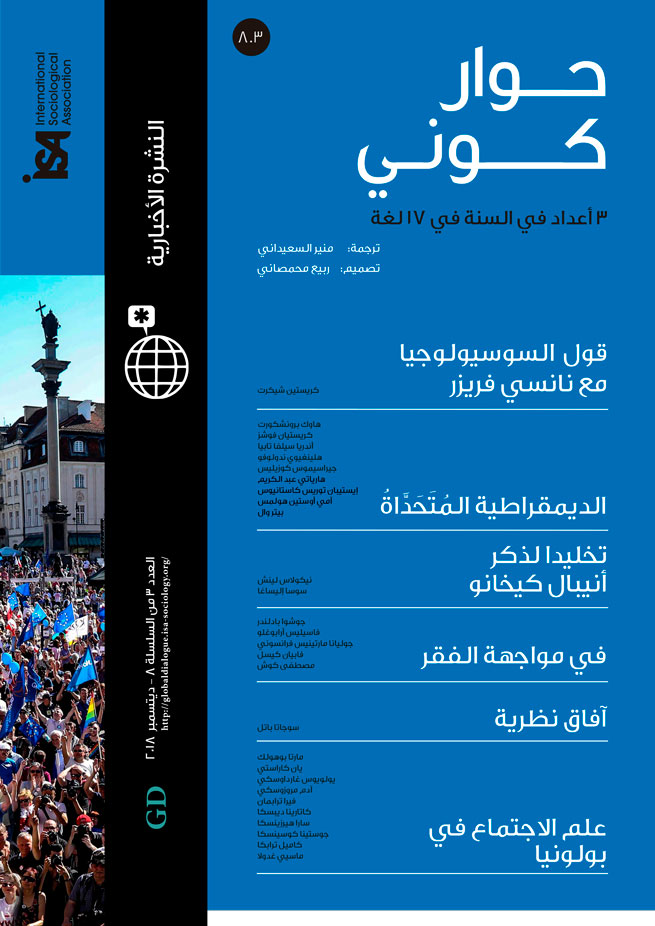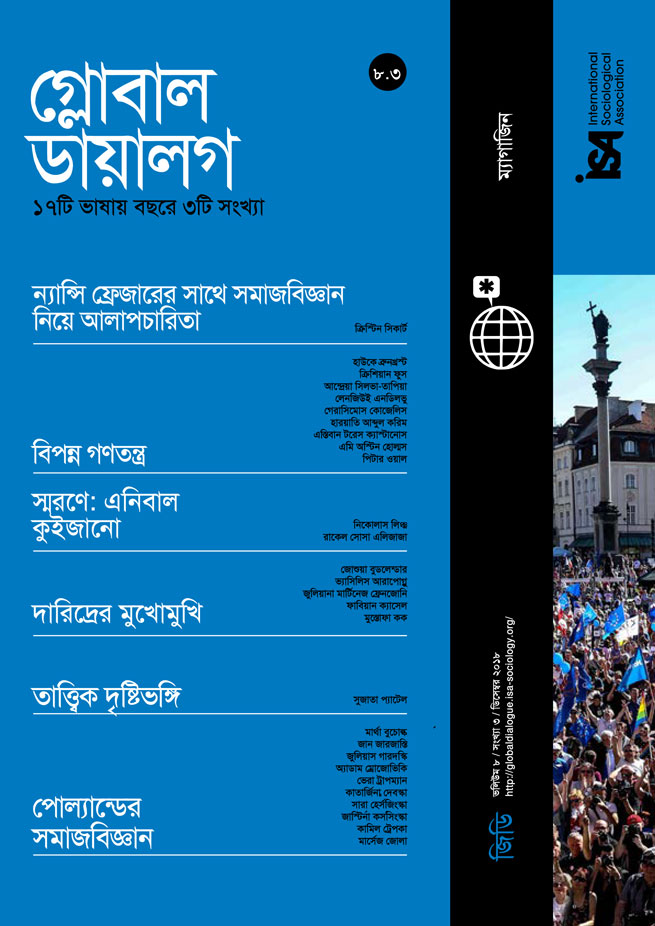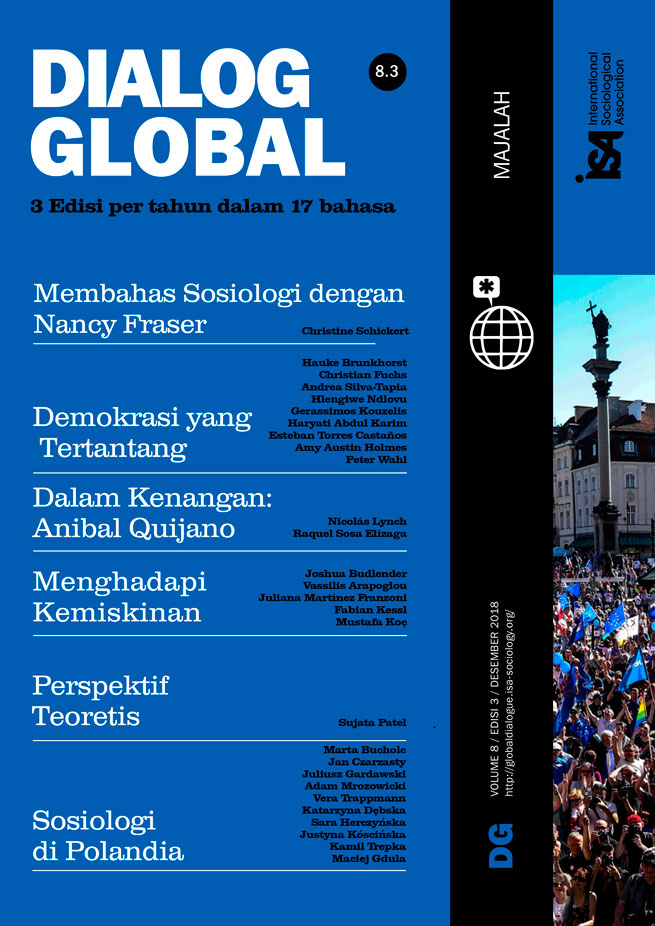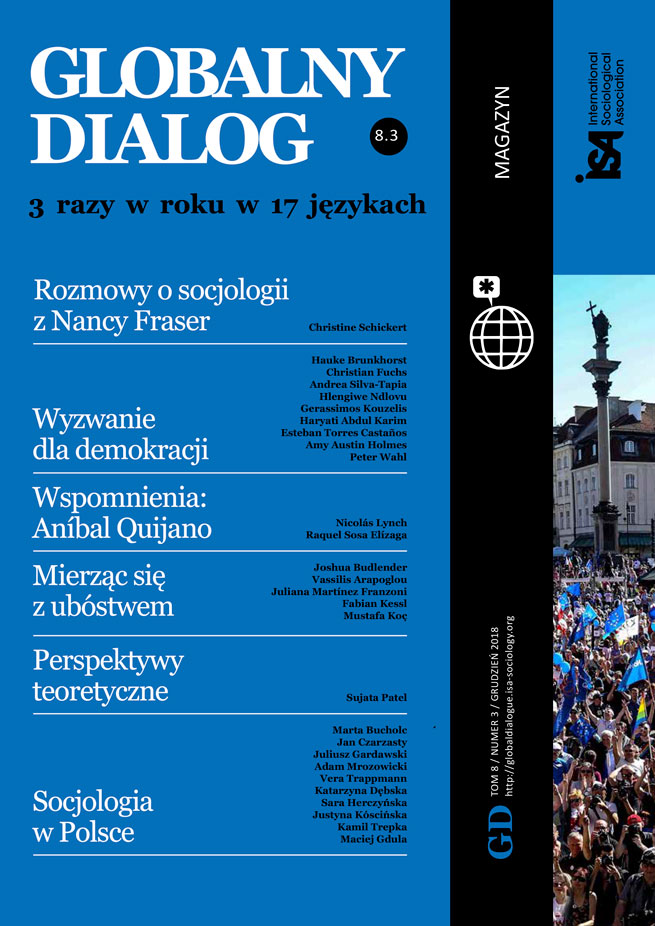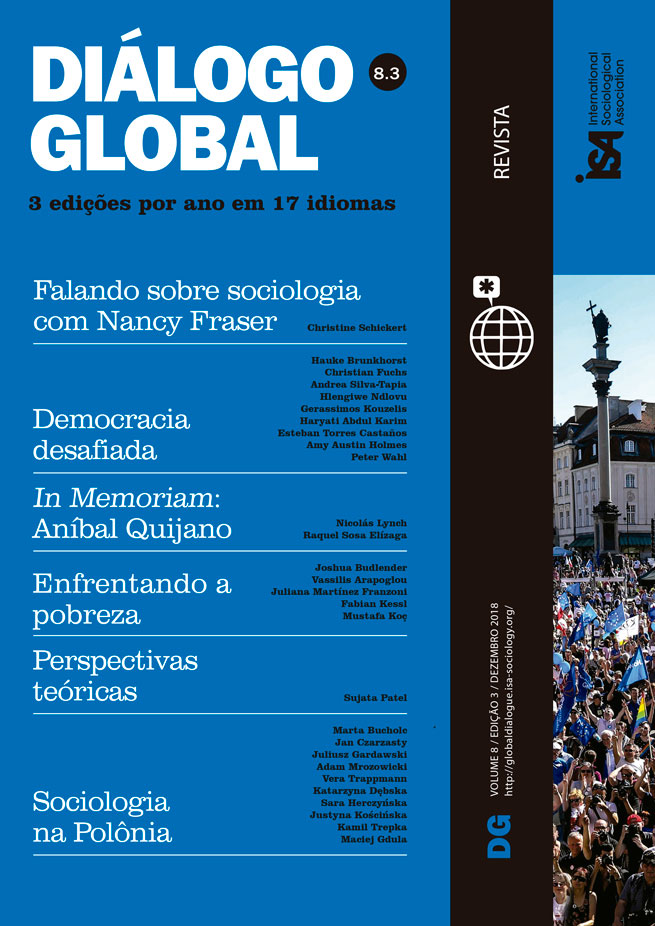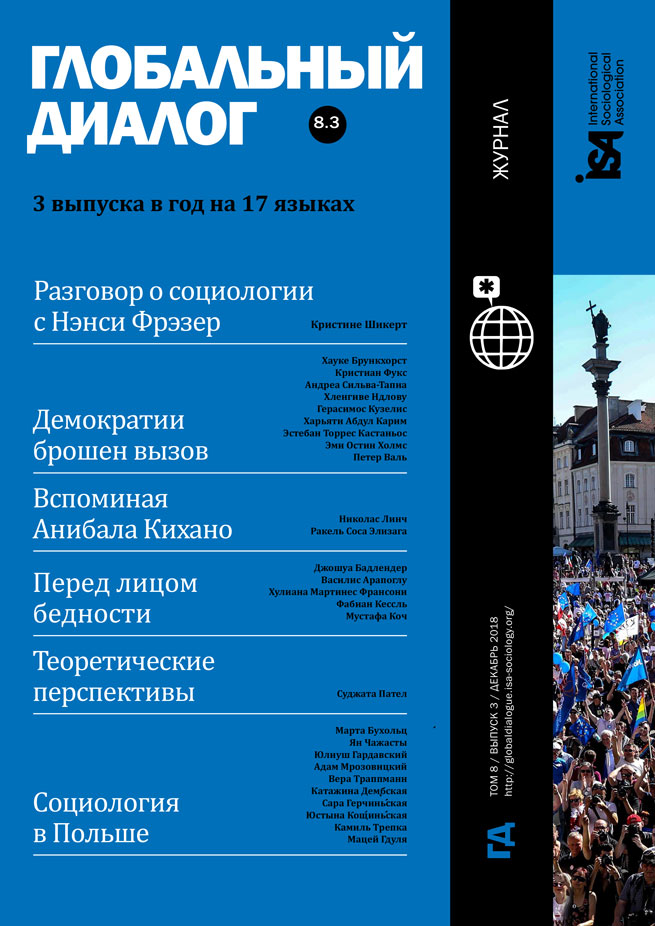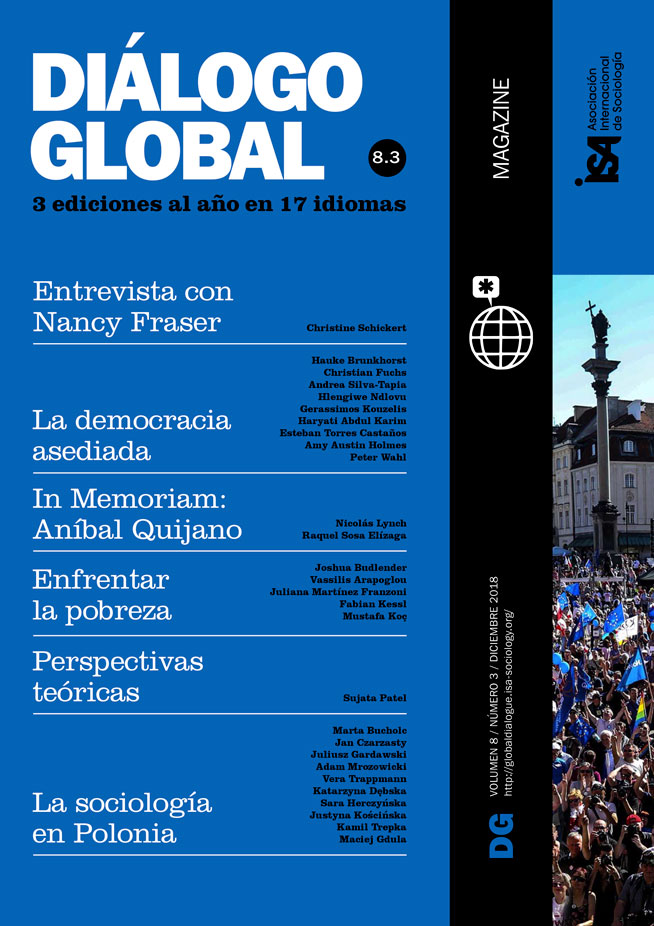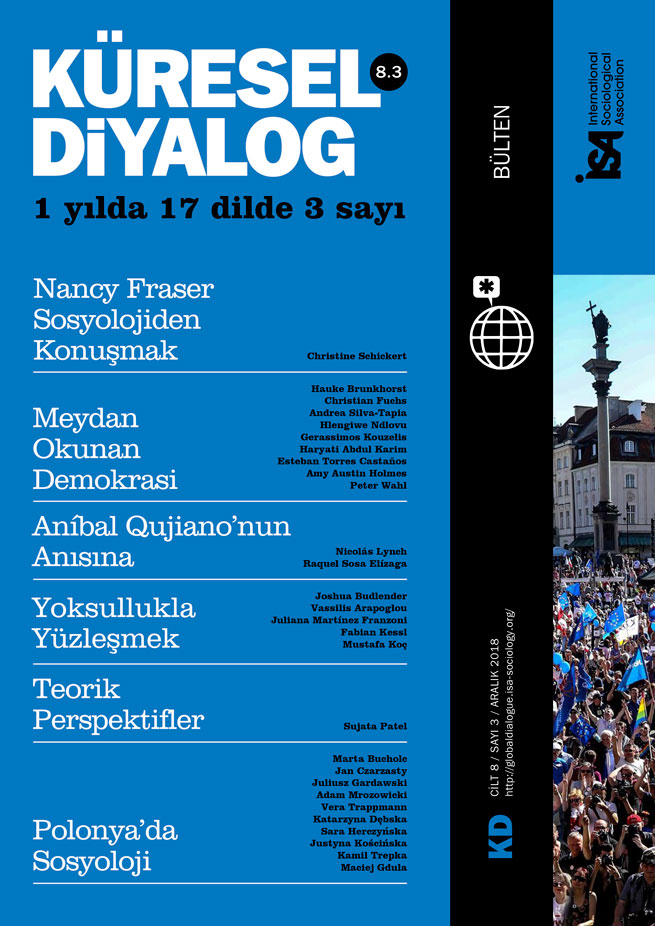In December 2017 the board of the local food bank (Tafel) in Essen (Germany) decided to restrict access for migrant users. Referring to the assumed misconduct of a young migrant man, the food bank revoked access for people without a German passport. This decision to restrict the access to a local food bank along ethnic lines has been discussed internationally and criticized heavily for its inherent racism. The case of Essen points to a shift in the social question. Instead of focusing on the differences and relations between “above and below” in a city like Essen, which is heavily polarized between the rich and the poor, a new difference is put on the agenda: the one between “in and out.” The opposition is now posed as being between the “needy and vulnerable German pensioner” and the “assertive young non-German man.” Even against the background of a democratic society, such a shift has to be discussed publicly as well as scientifically. What remains taken for granted in this new agenda, however, is the existence of local food banks in big European cities. Remarkably, the debate has only briefly touched the question why people in the 21st century are using a food bank in a country like Germany – or in other European as well as North-American countries – on a daily basis.
In Germany, official numbers on food aid are only available on the basis of the internal numbers of national associations, like the German Food Bank Association (Tafel Deutschland e.V.). The association reported that there were 934 local food banks in 2016, counting only their member organizations. If we take into account all the other organizations that distribute basic goods to “the needy,” we find a much larger system of poverty relief all around Europe – and beyond. In Germany alone, millions of people are users of soup kitchens, charity clothes shops, food distribution points, and other food banks. Our own research showed that around 5,000 – 6,000 organizations can be found in just five out of the sixteen Bundesländer (German states). A new system of poverty relief has been established since the 1980s (or earlier as in the US). That system can be called a “new charity economy.”
The term “new charity economy” describes a distribution system in which basic goods are distributed for free or sold at discount prices to “the poor” or “the needy” through voluntary helpers or low-paid persons. This system relies on the provision of everyday consumer goods from one of three sources: industrial overproduction; goods that can no longer be sold due to factors such as statutory standardization specifications and marketing objectives; and goods that are no longer needed by private households.
The “new charity economy” targets groups of people who do not have the means or resources to participate in the capitalist system of goods distribution. However, this new economy is primarily distributing basic goods for day-to-day living. As such, it affects forms of support, which were once the exclusive responsibility of the welfare state and its agencies (as we knew them in Europe or North-America in the middle of the twentieth century). In the social security system of the welfare state, material supply gaps based on legal claims are primarily buffered through cash benefits and supplemented by social services. Yet the “new charity economy” places non-monetary benefits alongside statutory social insurance, supply, or welfare structures as a subsidy for the needy. Sometimes it even replaces them. In the case of replacement, users are referred to this new livelihood support service that is based on donations. Its availability is not based on entitlement, but on receiving charitable gifts (implying loyalty). The “new charity economy” is turning poverty reduction into poverty relief by changing the mode of delivering support: donors as well as helpers are acting on the basis of compassion instead of a “solidarity between strangers” (Hauke Bunkhorst). It is temporary attention to the misfortune of others and not a formal right to support that characterizes the “new charity economy.”
But it is not only a system of poverty relief on the basis of loyalty and compassion as we knew it historically from the early days of industrialism. The “new charity economy” has to be understood as a secondary economic system as well. Closely interconnected with the primary market, the charity economy facilitates the transfer of surplus goods from the primary economy to a secondary system. This transfer also carries an economic benefit for those who donate the primary goods because they receive an equivalent profit for their donations. Food discounters for instance are still able to make a profit from donated goods, because (a) it reduces their disposal costs and allows possibly some tax savings; and (b) companies which are official contributors or sponsors can benefit and enhance their public image by making donations as a form of corporate social responsibility (CSR).
The “new charity economy” therefore illustrates the existence of a massive and growing shadow of the welfare state. Contrary to the public image, food banks, soup kitchens, charity clothes shops, and such are not the only voluntary-based initiatives in civil society. Our research shows that in Germany 90% of the organizations in the “new charity economy” provide both material assistance and a broad spectrum of social services. Thus, there is a strong connection to the formal welfare state, which is also apparent from the financing of the charity economy: what can be found is often a mix of donations, sponsorship, public funds, membership fees, generated revenues, and/or service charges. Beside, providers of donation-based aid often execute means-testing, where existing welfare state regulations are often applied. In other words, what links the “new charity economy” to the service systems of the welfare state is also the assessment of the individual’s situation by the public administration. This is observable in the indirect collaboration between public social and welfare authorities and the services of the “new charity economy.” For instance, the staff at job centers and employment agencies will point out services, such as food distribution points, to needy persons who are applying for state benefits. Thus a new relationship of subsidiarity – whereby the smaller unit is expected to provide assistance before the next larger unit – is established. Public administration employees understand the services of the “new charity economy” as a supplement to – or even a substitute for – actual welfare state benefits, even though they have no basis in social law.
The “new charity economy” could well serve as a prime example of the new division of labor between the three sectors of civil society, economy, and the state whereby their respective boundaries and logics of action are blurred. We are thus on the road towards a fundamental shift in the traditional forms of support for people in need.
Fabian Kessl, University of Duisburg-Essen, Germany <fabian.kessl@uni-due.de>




